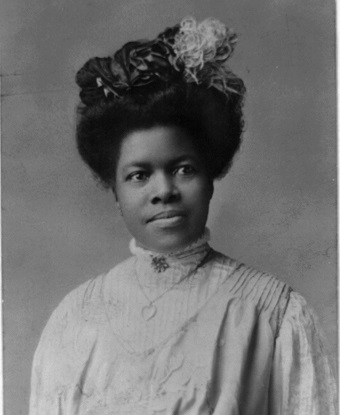Before #BlackGirlMagic and “She Believed She Could, So She Did” mugs, there was Nannie Helen Burroughs — a powerhouse born around 1880 in Orange, Virginia, to parents who had once been enslaved.
Her life? A masterclass in determination, vision, and fierce refusal to take “no” for an answer.
After her father passed away, young Nannie and her mother moved to Washington, D.C., where she enrolled at M Street High School (now Dunbar High), graduating with honors. But when she applied for a teaching job in D.C.’s public schools, she was rejected. Why? Historians believe it was because she had dark skin, and even the elite Black community at the time wasn’t immune to colorism.
But sis did not fold. Instead, Burroughs built her own table — and invited a whole community to sit at it.
Turning Rejection Into Revolution
In the early 1900s, Burroughs pitched her idea for a school for working-class Black women to the National Baptist Convention (NBC). They were sold — and bought six acres of land in Northeast Washington, D.C. Now all she needed was the money to actually build the school.
Booker T. Washington — yes, that Booker T. — doubted she could pull it off. He didn’t think everyday Black folks would dig deep to support it. But Nannie wasn’t interested in begging rich white donors for handouts. She believed in the power of the people — and she proved it.
Fueled by small donations from Black women and children, she launched the National Training School for Women and Girls, which officially opened in 1909.

While some folks rolled their eyes at the idea of teaching women anything beyond domestic skills, Burroughs was out here giving Black women tools to build careers and confidence. Her school taught typing, bookkeeping, public speaking, and even printing.
By 1928, the school had upgraded from a tiny farmhouse to the impressive Trades Hall, which included 12 classrooms, an assembly space, offices, and a full-on print shop. Yes, a print shop — because Nannie didn’t play.
Ahead of Her Time — And Ours
Burroughs wasn’t just about schooling. She was a vocal civil rights and suffrage advocate, pushing for alliances between Black and white women to fight for the vote. But she made it clear: Black women needed the ballot to defend themselves in a country that so often tried to erase them.
She never married, choosing instead to devote her entire life to empowering Black women. When she passed in 1961, she left behind a blueprint that would inspire the Civil Rights Movement — and future generations of changemakers.
In 1964, the school was renamed the Nannie Helen Burroughs School, and Trades Hall became a National Historic Landmark — the last standing reminder of Burroughs’ legacy of resistance, education, and Black woman excellence.
So the next time someone tells you you’re “doing the most,” tell them you’re just following in Nannie Helen Burroughs’ footsteps.
